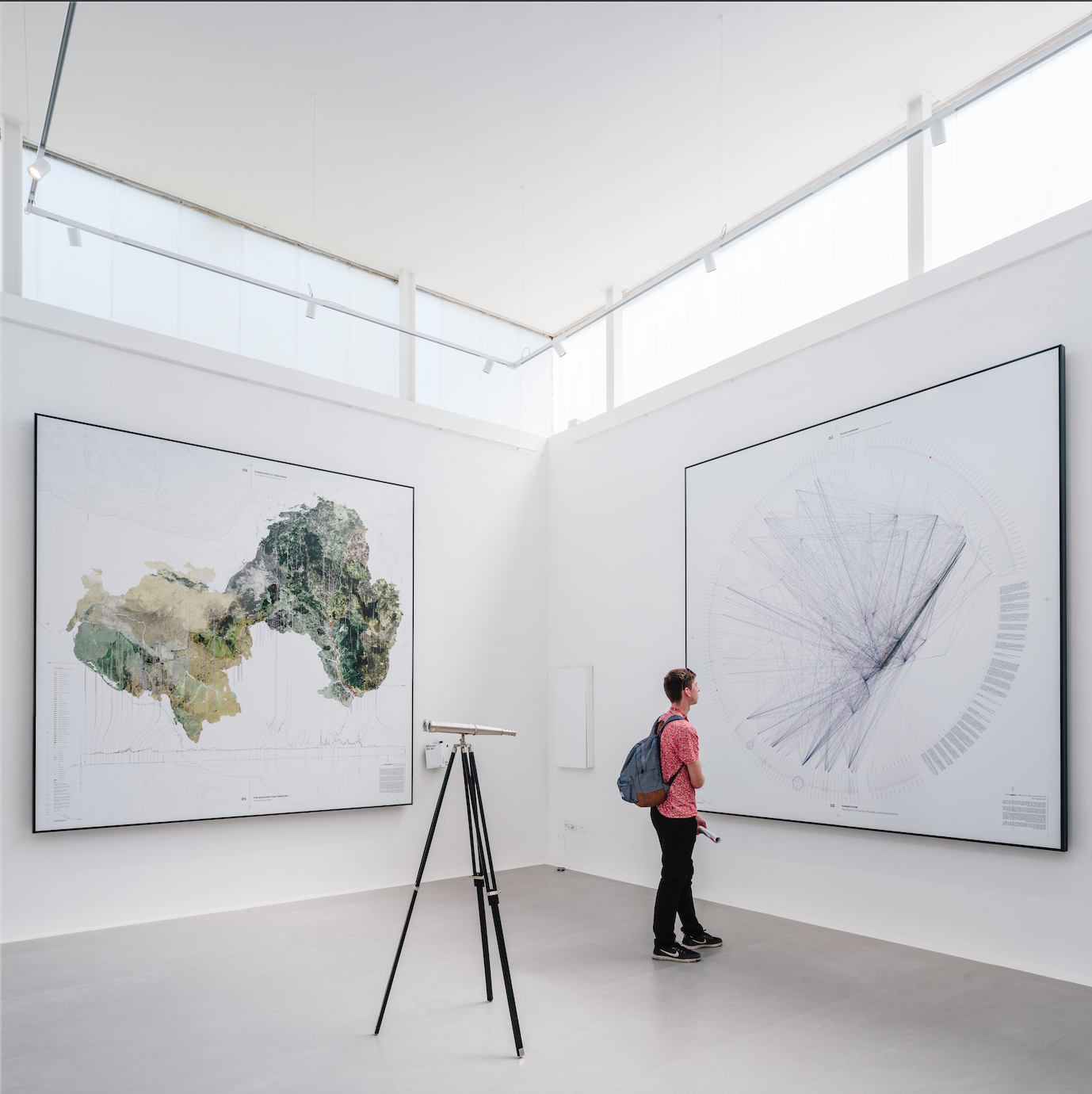WALLS OF AIR:
BRAZILIAN PAVILION AT THE
16TH VENICE ARCHITECTURE BIENALLE
CONCEPT & EXHIBITION DESIGN
WALLS OF AIR
BRAZILIAN PAVILION
Walls of Air examines the nature of the visible and invisible walls that both constitute and enclose modern-day Brazil, and explores what may have caused the country’s social and environmental fragmentation. Responding to the theme of the 2018 Venice Architecture Biennale—FREESPACE—the curators of the Brazilian Pavilion asked how spatial and social restrictions have prevented Brazil from establishing a more egalitarian and democratic public sphere. The resulting exhibition suggests that, if a free Brazil is to be built, its current problems must be understood from all vantages and by all citizens.
To address this challenge, the curators developed ten large-format cartographies that promote critical awareness of the spatial and conceptual separations that have resulted from Brazil’s urbanization processes as a way to make visible the effects these processes have had on the natural and urban environments. The maps range in scale from a single city to the entire Brazilian territory and its relation not only to Latin America but to the rest of the world. This use of multiple scales revealed that the first wall this research had to torn down is the wall separating architecture from other disciplines. Walls of Air is the result of collaborative research with more than two hundred professionals from ten disciplines, including anthropology, the arts, geography, law, medicine, politics, and the social sciences, which complement each other to help build common knowledge over the contemporary challenges manifested in Brazil.
From the way capital is distributed in the Brazilian territory to the way deforestation in the north of the country impacts life in the south, each map foregrounds a pressing theme while emphasizing the need to conceive of architecture as a means of rethinking the boundaries within our cities. The result of visualizing extended data sets from both national and international institutions, including the Brazilian Institute of Geography and Statistics, the Federal Police of Brazil, NASA, and the Global Forest Watch, Walls of Air proposes some first steps toward challenging—and transgressing—these boundaries.
Curators: Gabriel Kozlowski , Laura González Fierro, Marcelo Maia Rosa and Sol Camacho.
Text: Karen Marta
PHOTOGRAPHY: IMAGEN SUBLIMINAL





























